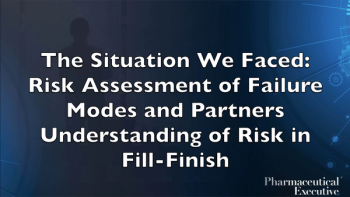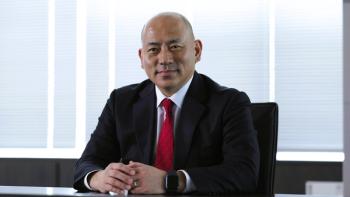Leading Science-Driven Organizations: Q&A with Lamine Mbow
Key Takeaways
- Boehringer Ingelheim prioritizes innovative therapies in high unmet medical need areas, reinvesting 28% of sales into R&D for breakthroughs in key therapeutic areas.
- Multidisciplinary teams and external collaborations are crucial for identifying novel targets and developing high-quality molecules, with 50% of the pipeline anchored in partnerships.
The Boehringer Ingelheim leader discusses his leadership style and how it impacts his team’s strategy.
Pharmaceutical Executive: What does it mean to lead a science-driven organization in the biopharma landscape?
Lamine Mbow: Boehringer Ingelheim is a top global pharmaceutical company committed to developing innovative therapies in areas of high unmet medical needs. For me, it’s a privilege to lead our discovery research organization forward – especially during a time when we have the strongest pipeline in the company’s history. We have the potential to bring forward treatments that will truly make a difference for patients. It’s this reminder that drives us to lead the science that matters to patients. It’s this reminder that solidifies the importance of focusing on understanding disease pathophysiology to identify and advance the right new therapeutic concepts and position them for the right patient. Our ambition to identify innovative solutions for patients inspires us to continuously challenge ourselves and adopt new tools and technologies to accelerate portfolio delivery and enhance the probability of success in the clinic and beyond.
PE: How are you leading Boehringer’s Research efforts, and what are the key priorities or innovations your teams are focused on?
Mbow: As an organization, our commitment to investing in R&D is unwavering. In fact, we reinvested nearly 28% (27.6%) of our sales (or $6.1B) back into our pipeline in 2024. Strategically, we’re committed to creating first-in-class breakthroughs across key therapeutic areas, including cardiovascular-renal-metabolic diseases, oncology, immunology, respiratory, eye health and mental health. This means having a long-term, impact-focused outlook to explore areas with high unmet patient needs.
We’re leveraging diverse approaches to sustain productivity, identify more and higher-quality new therapeutic concepts and decrease attrition. This means pairing a strong understanding of disease biology, powered by data science, to create fully integrated, multidisciplinary teams. This includes strong teamwork across therapeutic areas to mine for overlapping pathomechanisms and novel targets. We are leveraging computational innovation with experimental science in our labs to identify better targets and develop higher-quality molecules for the right patients. We can then quickly tap our translational and medical teams for patient studies to translate findings into potential therapies for our patients.
Importantly, we know we can’t innovate alone. That’s why 50% of our pipeline is anchored in collaboration with external partners – combining the strengths of our own research with our partners’ strengths. We leverage a range of partnerships with academia, biotechs and others to help us better understand the human disease or identify new approaches and technologies to discover molecules. Combined, these efforts help drive our priorities and innovation forward.
PE: In what way is your leadership style influencing how your team approaches research and innovation?
Mbow: I grew up in Senegal, where I developed a fascination with understanding the human system and finding solutions to support patients living with significant unmet needs. That curiosity pushed me to move to Switzerland and to the US, and to pursue my career. Today, that fascination continues to fuel my passion for science-driven innovation.
Leaders across our Innovation Unit, including myself, are committed to a purpose-driven, patient-centric mentality. It’s an approach that encourages deep biological understanding and a willingness to explore uncharted territories. This focus on first-in-class therapies at Boehringer is not just about scientific excellence; it’s about being bold, because ultimately, that means delivering first-in-class and innovative therapies to patients.
While I know nothing worthwhile comes easy – especially when it comes to research, I often think in sports analogies. You can play not to lose, or you can play to win. I believe in playing to win. That same mindset applies to innovation: being curious, playing outside of comfort zones, and taking smart risks.
PE: Over the course of your career, what major shifts have you seen in the R&D landscape, and how have those influenced the way you lead today?
Mbow: As we all know, this landscape evolves so quickly, providing major shifts in the way we approach science on a day-to-day basis. As such, we constantly encourage our teams to challenge their thinking – what could we look at in a new way, what could we create that’s truly new, what could we shift into a new context? This ensures we can bring more targeted, high-impact therapies to patients.
The shift toward precision medicine demands more than scientific excellence; it requires cross-functional collaboration. We focus on empowering teams to work seamlessly together, ensuring we bring more targeted, high-impact therapies to patients. These days, we are looking into truly bending the trajectory of disease in some areas by interfering with pathomechanisms much earlier. In short, precision medicine will open options to break the efficacy ceiling seen in many disease areas.
Building agile research capabilities for emerging modalities requires strategic foresight—the ability to pivot quickly while thinking two or even three steps ahead, balancing innovation with flexibility to stay competitive and patient-focused.
Lastly, AI and machine learning continue to transform every stage of drug discovery and development. Boehringer leaders are upskilling teams, fostering responsible data sharing, and embedding a culture of data-driven decision-making across the organization. Computational innovation is no longer a support function; it’s a strategic driver of how we accelerate breakthroughs.
PE: What guidance would you offer to the next generation of scientific leaders who aspire to make an impact in pharmaceutical R&D?
Mbow: As a researcher, the rate of failure is high, so I would say be resilient and stay connected to your “why.” For me, it’s the patients. There will be moments when the path forward is unclear, and the obstacles feel daunting. In those times, it helps to put challenges into perspective.
Lean on your colleagues, mentors, and collaborators, too. They are also part of your “why.” And remember, every experiment, every setback, every long night is part of something bigger. It’s not just about the science; it’s about the lives we have the potential to impact. And lastly, avoid leading by hype – follow the science and be humble in front of biology.
Newsletter
Lead with insight with the Pharmaceutical Executive newsletter, featuring strategic analysis, leadership trends, and market intelligence for biopharma decision-makers.





